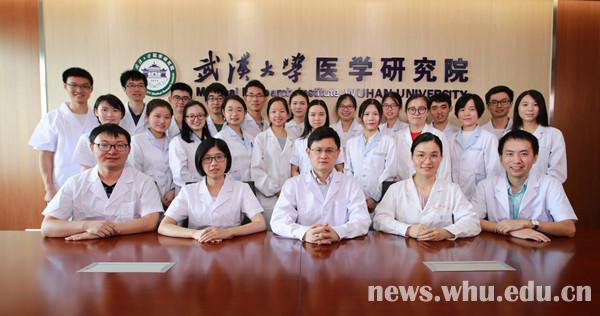In September, 2018, Prof. Shu Hongbin’s team published online their new research results on viral RNA-triggered innate immune response in the top international journal Immunity, and viral DNA-triggered innate immune response and inflammation-associated cancer development in Nature Communications in August.
It is widely known that viruses that infect humans and other animals fall into two categories according to their genetic material (nucleic acid): viral RNA (ribonucleic acid) and viral DNA (deoxyribonucleic acid). Once they infect host cells, the downstream effector proteins (receptors) that can detect these viruses mediate innate antiviral immune and inflammatory responses by inhibiting microbial replication and promoting clearance of infected cells, thereby facilitating the host adaptive immune response to eliminate infected pathogens (Akira et al., 2006; Gürtler and Bowie, 2013; Hiscott, 2007; Medzhitov, 2007).
Previous studies have demonstrated that viral RNA and viral DNA can be respectively recognized by RIG-I/MDA5 and cGAS in cells. However, RIG-I/MDA5 and cGAS are lowly expressed in most cell types and induced after viral infection. Therefore, how these receptors effectively recognize the invading viral nucleic acid to activate the antiviral immune response has been an important yet unsolved problem in this filed.
After years of work, Shu’s team have identified ZCCHC3, a CCHC-type zinc-finger protein, a positive regulator of the RLRs, which plays a crucial role in innate antiviral immune response to different types of RNA viruses.[1] Similarly, their results suggest that ZCCHC3 is also a co-sensor for recognition of double-strand (ds) DNA by cGAS, which is important for efficient innate immune response to cytosolic dsDNA and DNA virus.[2] In a word, the secret to the enigma above is that ZCCHC3 directly binds to viruses, enhances the binding of RLRs to viral RNA and cGAS to viral DNA, and is important for RLRs and cGAS activation following viral infection.
Their research findings are elaborated in these two articles respectively, The Zinc-Finger Protein ZCCHC3 Binds RNA and Facilitates Viral RNA Sensing and Activation of the RIG-I-like Receptors and ZCCHC3 is a co-sensor of cGAS for dsDNA recognition in innate immune response. Prof. Shu’s doctoral student, Lian Huan, is the first author. These studies, revealing common and characteristic mechanism for recognition of viral RNA and viral DNA, offer significant theoretical evidences on biological target for host defense against microbial infection.
Some chronic or unresolved inflammation promotes tumorigenesis. It has been demonstrated in previous studies that signal transducer and activator of transcription 3 (STAT3), a transcription factor, plays central roles in this process. This group identified Tripartite Motif Containing 27 (TRIM27), which localizes to retromer-positive punctate structures, as a positive regulator of interleukin (IL)-6-induced STAT3 activation and downstream gene expression.[3] Expression of TRIM27 promotes colitis and colitis-associated carcinogenesis in nude mice.
The results are elaborated in the article TRIM27 mediates STAT3 activation at retromer-positive structures to promote colitis and colitis-associated carcinogenesis, with its first author being Zhang Hongxia, a doctoral student of Prof. Shu. These findings reveal a retromer-dependent mechanism for regulation of STAT3 activation, inflammation, and inflammation-associated cancer development. The theory helps the professionals to make sense of inflammation to cancer development and formulate potential treatment strategies for inflammation-associated cancer development.

Attention: Some particular references noted in previous articles have been declared in round brackets at the end of paragraph 2.
References
[1] Lian H, Zang R, Wei J, et al. The Zinc-Finger Protein ZCCHC3 Binds RNA and Facilitates Viral RNA Sensing and Activation of the RIG-I-like Receptors[J]. Immunity.
[2] Lian H, Wei J, Zang R, et al. ZCCHC3 is a co-sensor of cGAS for dsDNA recognition in innate immune response[J]. Nature Communications, 2018,9(1):3349.
[3] Zhang H, Xu Z, Lin H, et al. TRIM27 mediates STAT3 activation at retromer-positive structures to promote colitis and colitis-associated carcinogenesis[J]. Nature Communications, 2018,9(1):3441.
(Rewritten by Lu Xinqiang, edited by Zheng Lingling, Shen Yuxi, Hu Sijia, photo from Yi Yan)